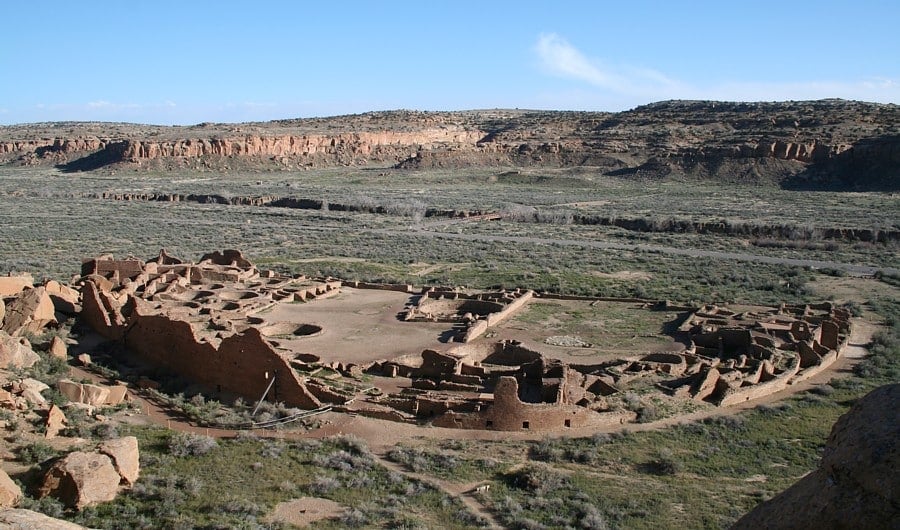

For the first time, a federally recognized New Mexico indigenous tribe has led a genetic study to trace its ancestral roots, strengthening oral histories through science and reinforcing its role in protecting sacred land.
The Picuris Pueblo, a sovereign tribal nation in northern New Mexico, partnered with an international team of scientists to study ancient remains connected to the region of Chaco Canyon. The area, long considered sacred by Pueblo peoples, is at the center of debate over nearby oil and gas development.
Tribal leaders viewed DNA research as a way to back their oral traditions and advocate more forcefully in land use decisions. “We’ve been telling our stories as long as time immemorial,” said Picuris Lt. Gov. Craig Quanchello. “Now we can say, ‘This is ours, we need to protect it.’”
The findings, published Thursday in the journal Nature, show a clear genetic relationship between 13 current members of the Picuris Pueblo and 16 individuals who lived near Chaco Canyon between 1300 and 1500 A.D.
Ancient DNA ties New Mexico’s Picuris Pueblo tribe directly to Chaco Canyon, affirming long-held oral histories. This groundbreaking research led by the tribe itself marks a pivotal step in preserving their cultural heritage. #IndigenousHeritage #DNAEvidence #ChacoCanyon pic.twitter.com/umRNPvnZX1
— WorldNewsByte (@World_News_Byte) May 1, 2025
“The results show a strong relationship between ancient and present-day Picuris,” said Thomaz Pinotti, a geneticist at the University of Copenhagen and co-author of the study.
Unlike earlier studies that often took Indigenous remains and artifacts without permission, this project was led by the Picuris Pueblo and was done in collaboration with researchers. It signals a move toward more ethical, consent-based research models.
“It wasn’t an easy decision,” said Picuris Gov. Wayne Yazza, who also contributed to the study. “This is life-changing data.”
New Mexico is home to 19 Pueblo indigenous tribes. While the study focused on the Picuris, it does not challenge the historical ties that other tribes have to Chaco Canyon.

Now a UNESCO World Heritage site, Chaco Culture National Historical Park is managed by the U.S. National Park Service. The area is known for its wide desert landscapes and massive sandstone buildings, including multistory homes and ceremonial spaces built by ancestral Pueblo peoples.
They have been here a long time …
These images are found at Chaco Canyon. I grew up hearing about Star People at Chaco Canyon.
The Diné , Hopi , Lakota , Crees and Indigenous people everywhere have Star People in their stories
Sǫʼ Dineʼé
#NHI #Ufotwitter
pic.twitter.com/ZyX1Hg9daJ
— Ursla_k80 (@ursla_k80) April 25, 2025
Paul Reed, a preservation archaeologist with Archaeology Southwest, warned against describing Chaco Canyon as an abandoned or lost civilization.
That kind of thinking is “particularly damaging in this instance because it disenfranchises the Pueblo people who live all around the canyon to this day,” Reed said.
Brian Vallo, a member of the Acoma Pueblo and director of the Chaco Heritage Tribal Association, said the study comes at a critical time. Federal land near the park is under threat from potential drilling and mining activity.
“We have these close connections because our ancestors migrated and built these places,” Vallo said. They remain central to the preservation of our own Indigenous culture.”
As federal land policies evolve, the Picuris Pueblo’s use of genetic research may offer a powerful new way to protect cultural heritage rooted not just in tradition but also in science.
